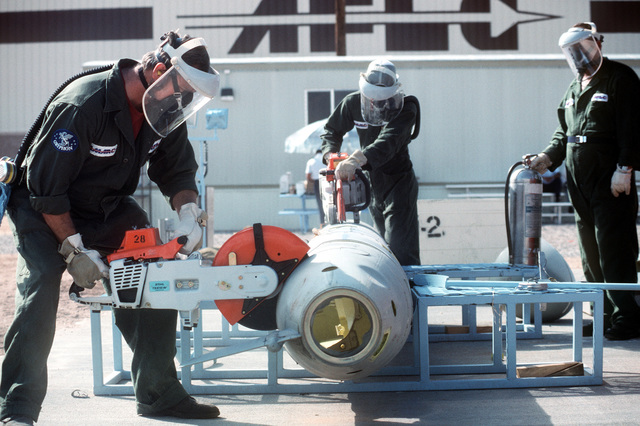
In the words of President Donald Trump, ‘nobody’s happy’ with the dimming prospects for further US–North Korea talks; last week Pyongyang renewed short-range missile tests and the US Justice Department impounded North Korea’s second-largest cargo vessel for sanctions violations. But this wasn’t the first instance of backsliding after negotiations broke down. In March, mere days after Kim Jong-un dined with Trump at the Metropole Hotel in Hanoi, satellite imagery suggested renewed activity at the Sohae satellite-launch and rocket-testing facility.
The Hanoi summit’s unsatisfying conclusion stemmed from dissimilar definitions of ‘complete denuclearisation’. US officials later clarified that North Korea’s ballistic missile capabilities and chemical and biological weapons programs must also be eliminated. More significantly, US National Security Advisor John Bolton rejected North Korea’s preference for a step-by-step, reciprocal approach to talks, in which negotiating carrots such as sanctions relief, economic development, a peace declaration, or diplomatic normalisation could keep pace with corresponding progress towards weapons dismantlement and a verification framework.
After three decades of intermittent negotiations with North Korea, direct engagement between heads of state was a fresh approach, for which Trump should be commended. But his administration’s indigestion when contemplating anything less than an all-encompassing, landmark accord should have been tempered with a seasoned helping of negotiating flexibility. And looking beyond Hanoi, it’s evident that Trump and his team are hardly committed to nuclear arms control writ large.
Only weeks after the US declared its intention to withdraw from the Intermediate-Range Nuclear Forces (INF) Treaty, which forbids both nuclear and conventional missiles with ranges of 500 to 5,000 kilometres, the Pentagon announced its plans to test a ground-mobile version of the sea-launched Tomahawk cruise missile in August, followed by a 4,000-kilometre-range ballistic missile in November.
Russia and the US have each critiqued the other for treaty noncompliance. Washington has continued to cite the operating range of Russia’s 9M729 missile and Moscow’s failure to course-correct since 2014, whereas Moscow has countered that the US Aegis Ashore missile defence site in Romania could perhaps be repurposed to launch offensive cruise missiles instead of only defensive interceptors.
At a January meeting in Geneva, Russia purportedly offered an inspection of the 9M729 system in exchange for a demonstration that the Aegis launchers couldn’t be converted to accommodate offensive missiles. American diplomats rejected this proposal, and, with the US Defense Department wasting no time to prepare for tests of INF Treaty–violating weapons soon after the agreement becomes void on 2 August, the Trump administration appears all too willing to dispense with existing arms limitations.
US officials have also yet to communicate their stance on prolonging the New Strategic Arms Reduction Treaty (New START). In a phone call with Russian President Vladimir Putin in January 2017, Trump reportedly disparaged the treaty as a ‘bad deal’ after Putin mentioned possible extension beyond 2021. Top US Air Force generals have testified before Congress and spoken publicly in unequivocal support of New START, calling bilateral and verifiable arms-control treaties ‘essential’, ‘of huge value’, ‘unbelievably important’ and ‘good for us’.
Regrettably, Bolton was a strident critic of New START before his appointment to lead Trump’s National Security Council, and the US State Department’s top diplomat for arms control remains noncommittal, explaining that the administration’s consolidated position towards treaty extension is still meandering through bureaucratic interagency review. ‘It gives reason to suspect our American counterparts of setting ground’ to let the treaty expire quietly, said Russia’s deputy foreign minister. Without the INF Treaty and the binding, verifiable limits contained in New START, American and Russian nuclear weaponry could soon be unconstrained for the first time since 1972.
And signatories to the Nuclear Non-Proliferation Treaty have just concluded their final preparatory meeting in advance of the treaty’s review conference next year. Non-nuclear states have expressed irritation that the US and Russia have further created ‘doubt about their intention ever to fulfil their disarmament obligations’. Instead of faithfully pursuing another stepwise reduction in its numbers of launchers and warheads, the US proposed multilateral working groups to discuss specific disarmament challenges. Among the 122 countries that voted in July 2017 for a nuclear-weapons ban, this American initiative, called ‘Creating an Environment for Nuclear Disarmament’, smells like much high-minded talk without any meaningful effort towards US arms reductions.
If Trump desires credibility, dialogue with Russia promises fertile ground. At the outset, his political opponents may deride such overtures as cosying up to Putin. But as highlighted by former admiral Mike Mullen, the top American military officer from 2007 to 2011, ‘even in the darkest days of the Cold War’ the US had regular interchanges with the Soviet Union, but ‘we don’t have them now—it’s not even close’.
And responsibly trimming American and Russian arsenals would make any future pressure on North Korea all the more compelling.
Commitment to arms-control talks could help Washington and Moscow further comprehend areas of shared concern, such as China’s economic clout in central Asia and its adventurism in the Arctic, short of a thaw in relations. If mutually beneficial agreements with Moscow stimulate Trump’s appetite for open-minded negotiations and incremental processes, and achieve appreciation and esteem from the international community, perhaps step-by-step progress with Kim would then become palatable.

